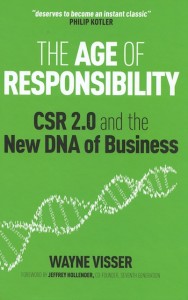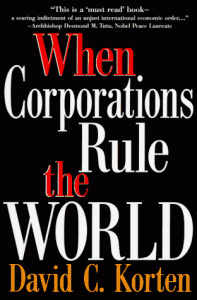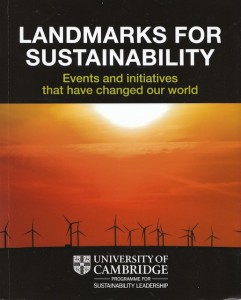Nature vs. Nurture:
Are Social Entrepreneurs Born or Made?
Blog by Wayne Visser
Part 7 of 13 in the Age of Responsibility Blog Series for 3BL Media.
What do Taddy Blecher, Anurag Gupta, Wang Chuan-Fu and all of the other social entrepreneurs have in common? Is this a special breed of human being? Are social entrepreneurs born or can they be made? In the academic literature, there is an interesting thread of research that is around the concept of ‘champions’ in organisations, especially ‘environmental champions’. The idea draws on prior conceptions of the human resources champion in the 1970s and 1980s, before HR became institutionalised.
Academics define environmental champions as people who can attractively express a personal vision about environmental protection that is in tune with both industry’s needs and wider public concern and who convince and enable organisation members to turn environmental issues into successful corporate programs and innovations. Environmental champions have been showed to imbue a combination of characteristics, including being a catalyst, champion, sponsor, facilitator and demonstrator. Their skills include the ability to identify, package and sell environmental issues within their organisations. Their effectiveness in engaging others rests heavily on expertise, top management support and a strong appreciation for the problems that every business unit or operations manager faces.
Research on champions is not confined purely to the environmental dimension of sustainability. Others have written about socially responsible change-agents, as well as managers’ individual discretion as a component of corporate social performance. British academic Christine Hemingway, for example, finds that CSR can be the result of championing by a few managers, based on their personal values and beliefs, despite the personal and professional risks this may entail. Individual managers are also often mediators in corporate philanthropy and stakeholder influence. Hence, the notion of CSR champions has emerged as an important concept, which I will return to this in the final blog on individual change agents.
Bill Drayton, who has been involved in selecting and tracking the progress of the 2,700 Ashoka Fellows, believes social entrepreneurs ‘focus everyday on the “how to” questions. How are they going to get from here to their ultimate goal? How are they going to deal with this opportunity or that barrier? How are the pieces going to fit together? They are engineers, not poets. … The entrepreneur’s job is not to take an idea and then implement it. That is what franchisees do. The entrepreneur is building something that is entirely new – by constantly creating and testing and recreating and then testing and recreating again’ …
Continue reading
[button size=”small” color=”blue” style=”download” new_window=”false” link=”http://www.waynevisser.com/wp-content/uploads/2012/04/blog_nature_nurture_wvisser.pdf”]Pdf[/button] Nature vs Nurture (blog)
Related websites
[button size=”small” color=”blue” style=”tick” new_window=”false” link=”http://www.csrinternational.org”]Link[/button] CSR International (website)
[button size=”small” color=”blue” style=”tick” new_window=”false” link=”http://www.waynevisser.com/books/the-age-of-responsibility”]Link[/button] The Age of Responsibility (book)
Cite this blog
Visser, W. (2012) Nature vs. Nurture: Are Social Entrepreneurs Born or Made, Wayne Visser Blog Briefing, 20 March 2012.







 If we expect the right to fair treatment, we have a responsibility to respect the rule of law and honour the principle of reciprocity. If we believe in the right to have our basic needs met, we have the responsibility to respond when poverty denies those rights to others.
If we expect the right to fair treatment, we have a responsibility to respect the rule of law and honour the principle of reciprocity. If we believe in the right to have our basic needs met, we have the responsibility to respond when poverty denies those rights to others.



 Scientists have long been aware of the earth’s extreme temperature variations, with the last major ice age ending about 10,000 years ago. However, in 1824 Jean-Baptiste Fourier discovered a global warming (or greenhouse) effect, and in 1861, the Irish physicist John Tyndall carried out key research on carbon dioxide (CO2) and heat absorption.
Scientists have long been aware of the earth’s extreme temperature variations, with the last major ice age ending about 10,000 years ago. However, in 1824 Jean-Baptiste Fourier discovered a global warming (or greenhouse) effect, and in 1861, the Irish physicist John Tyndall carried out key research on carbon dioxide (CO2) and heat absorption.